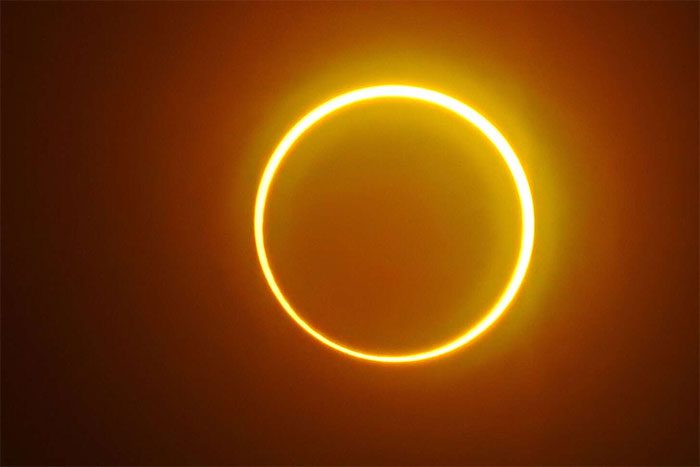According to a reporter in Sydney, thousands of people are flocking to the small, remote town of Exmouth in Western Australia this April in hopes of witnessing a solar eclipse.
This will be the only place in Australia to experience a total solar eclipse on April 20. This event is part of a rare hybrid eclipse phenomenon, occurring along a narrow path that stretches from near Antarctica to the Marshall Islands in the Pacific Ocean.

Exmouth is the only place in Australia to witness a total solar eclipse on April 20.
The town of Exmouth will be positioned directly under the shadow cast by the Moon, as it aligns perfectly with the Sun. During this period known as totality, the Sun will be completely obscured for 58 seconds before re-emerging. Professor Jonti Horner, an astronomer from the University of Southern Queensland, believes that this will be a relatively brief eclipse. Meanwhile, the rest of Australia will experience a partial eclipse, meaning the Sun will not be completely obscured. The extent to which the Sun is covered and whether people notice it will depend on their location.
According to Professor Horner, the Moon may cover the Sun to varying degrees, from 80-95% in the northern and western regions, and dropping below 5% in Tasmania. In Darwin, residents will see 80% of the eclipse, so by the middle of the eclipse, they will observe a crescent Sun. Similarly, in Perth, the coverage will be about 70%, and the crescent shape in the sky will be quite apparent. Meanwhile, the eclipse will be less pronounced in the states of New South Wales, Victoria, the Australian Capital Territory, Tasmania, and the southeastern part of Queensland.
The Australian website abc.net.au cites research by scientists predicting that the next total solar eclipse will occur on July 22, 2028, cutting a path from the town of Kimberley through the city of Sydney. Additionally, there will be a total solar eclipse in southeastern Australia on November 25, 2030; an annular eclipse passing over Tasmania on March 9, 2035; and a total solar eclipse crossing central Australia on July 13, 2037.
A solar eclipse occurs when the Moon passes between the Earth and the Sun, obscuring all or part of the Sun’s light. Each year, there are typically 2-5 solar eclipses, each casting a shadow over different parts of the Earth. These spectacular events occur during the new moon phase, but they do not happen every month because the Moon’s orbit is not a perfect circle and is tilted, so it does not always align perfectly.
There are three main types of solar eclipses: total eclipse, partial eclipse, and annular eclipse. A total eclipse occurs when the Sun, Moon, and Earth are perfectly aligned, and the Moon appears to completely cover the Sun. A partial eclipse is a segment of a total eclipse—visible before and after totality for areas on the center line—or during the entire duration in areas not under the shadow. They can also occur independently of total eclipses when the orbits of the Sun, Moon, and Earth do not align perfectly.
An annular eclipse is similar to a total eclipse, but the Moon does not completely obscure the Sun, resulting in a ring of light appearing around the dark shadow. This occurs when the Moon is slightly farther away, preventing the shadow from reaching the Earth. Instead, the front part of the shadow, known as the antumbra, moves along the path of the eclipse.
A hybrid eclipse occurs when the Moon is at a precise distance such that its shadow is affected by the curvature of the Earth. A hybrid eclipse is a combination of a total and an annular eclipse and accounts for only about 3% of all solar eclipses. The most recent hybrid eclipse occurred on November 3, 2013. Scientists predict the next hybrid eclipse will take place on November 14, 2031.


















































